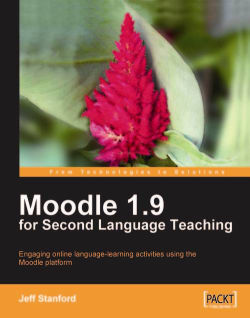Back in 2010, when I first started working with Moodle, I got most of my inspiration from the book Moodle 1.9 for Language Teaching (2009) by Jeff Stanford. The learning management system underwent many changes and upgrades since, but much of the original work can be very useful for teachers in modern foreign languages, whether they work in K-12 or beyond.
I had just started working as a Dutch (NT2) language teacher as I went looking for ways to create a technology enhanced learning experience. Twelve years on and working as an educational technologist at a Dutch University of Applied Sciences, I feel there’s still a lot language teachers can do to create an engaging blended or online classroom with lots of meaningful learning activities.
It is by no means my intention to rewrite the book, but it’ll be interesting to see how the original ideas for learning activities translate to current good practices in instructional design and teaching.
In this blog series, I’ll follow the overall structure of the Stanford (2009), focusing on one skill at a time:
- Reading
- Writing
- Speaking / Conversation
- Listening
- Vocabulary
- Grammar
Also, I’ll try to provide examples of learning activities so you can translate them to your own teaching practice.
Why Moodle?
First of all, Moodle is an open source LMS used all over the world in more than 100 different languages. It is a completely modular learning environment, that can be modified and extended with numerous plugins to support your learner audience. Most of these plugins are made available to the international community of users and developers under a GPL license, free to use.
And… did you know a lot of research into technology enhanced language learning (TELL) or computer assisted language learning (CALL) involves this easy to use LMS?
